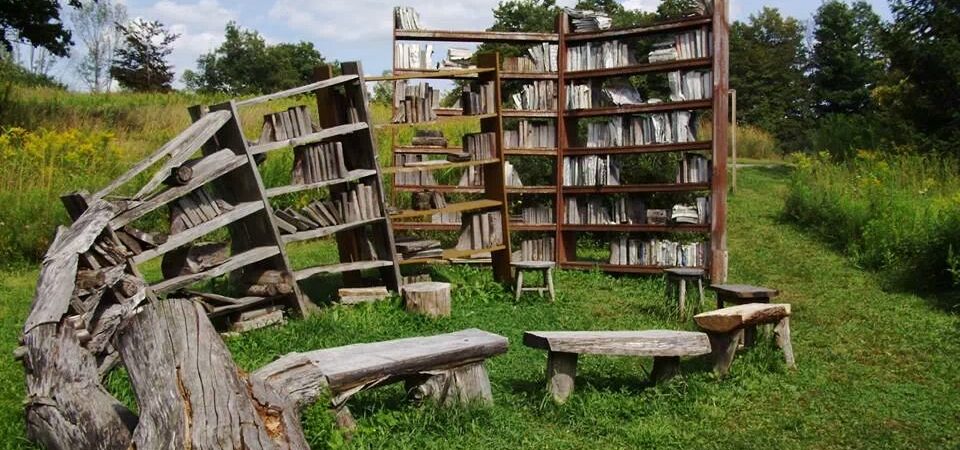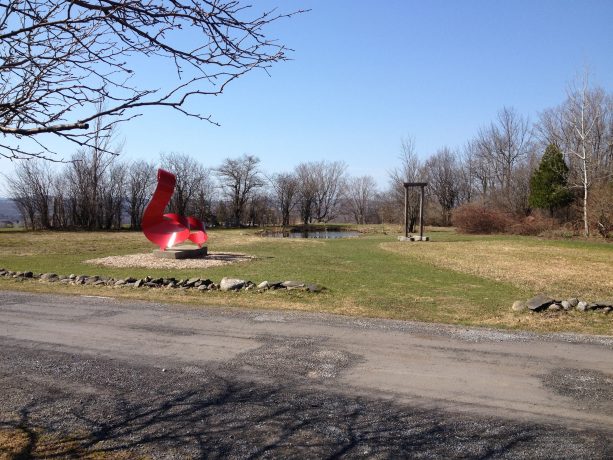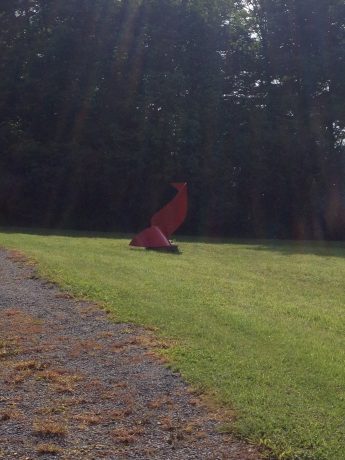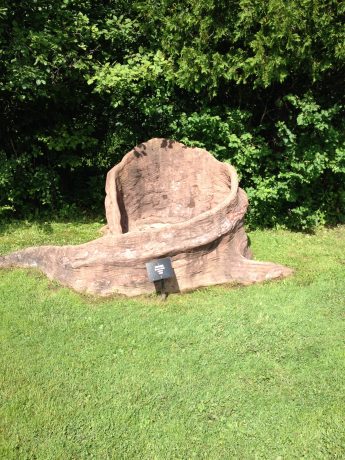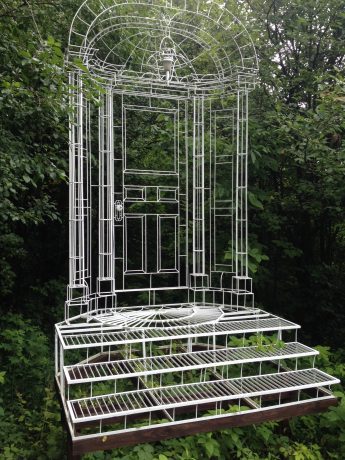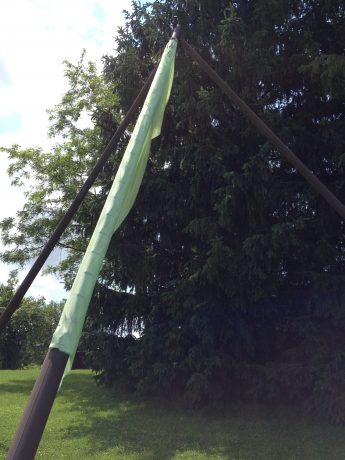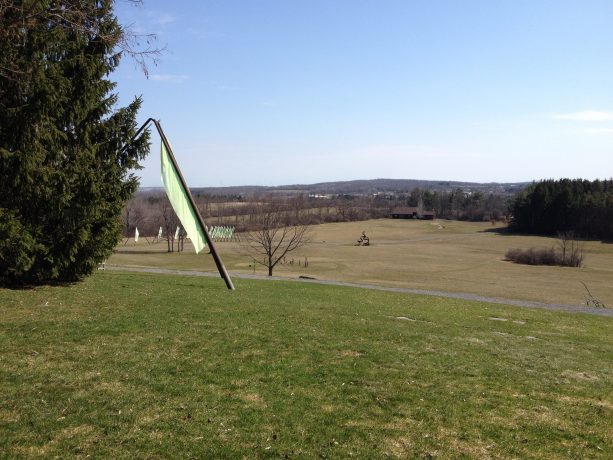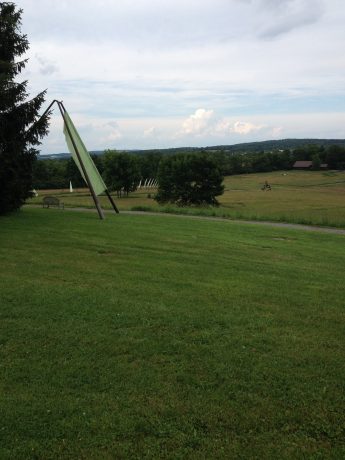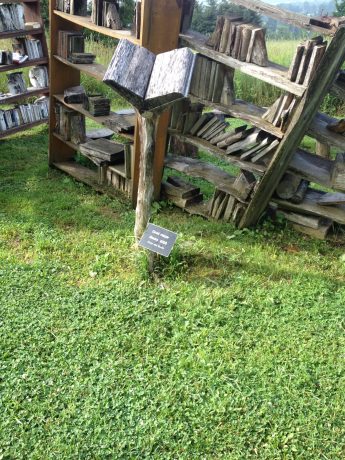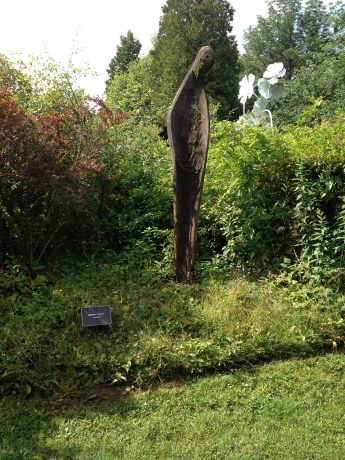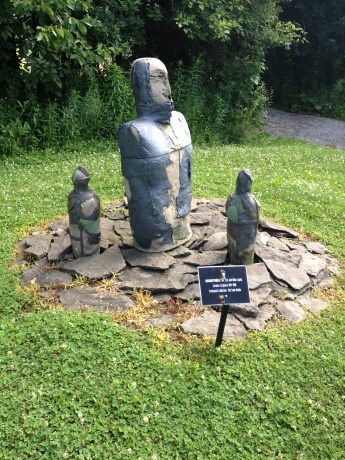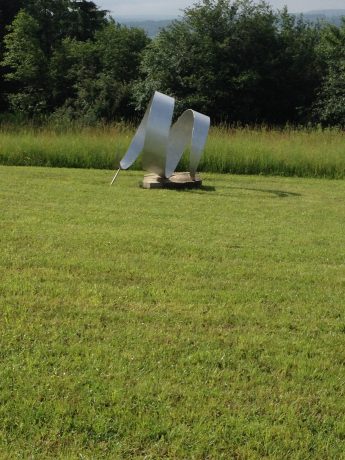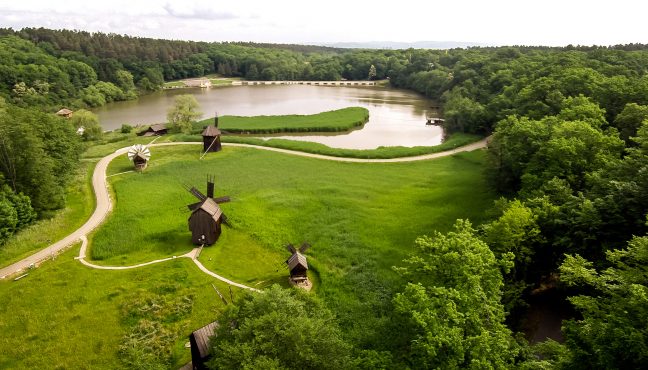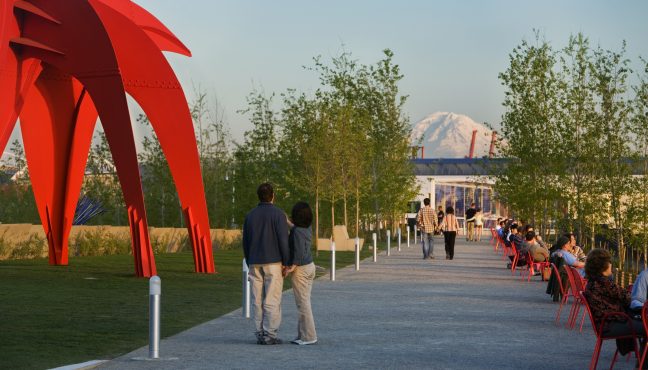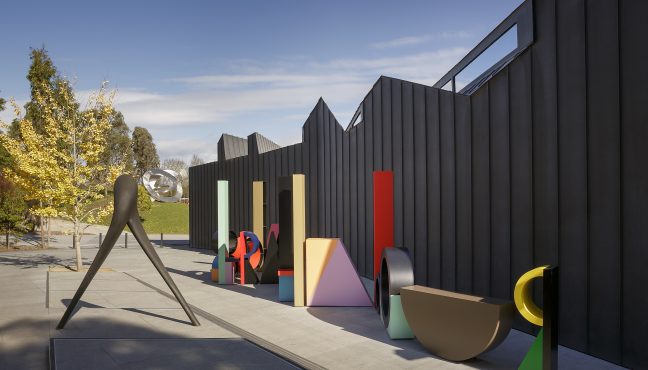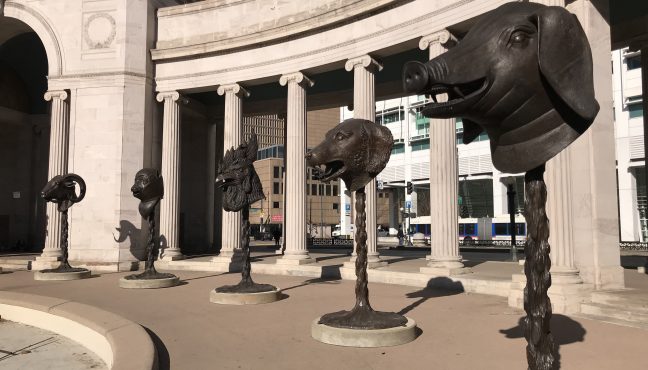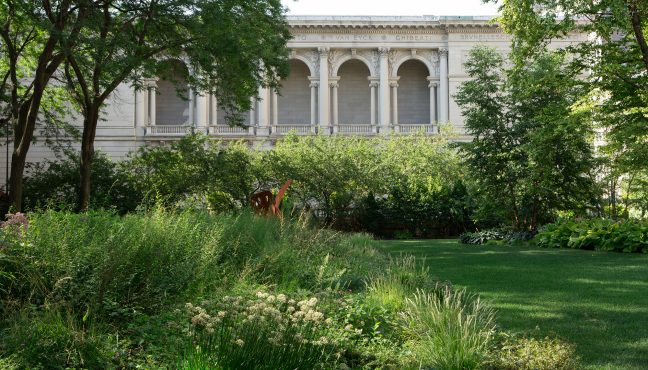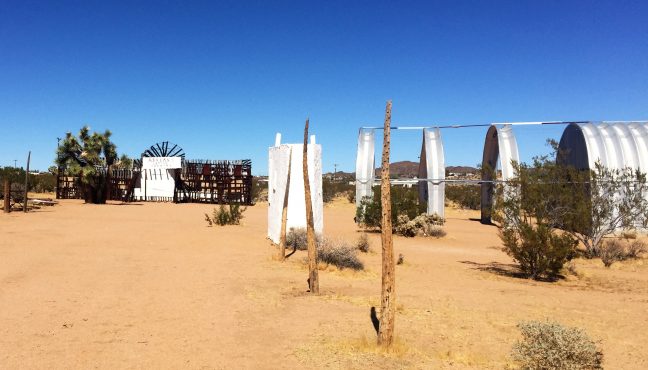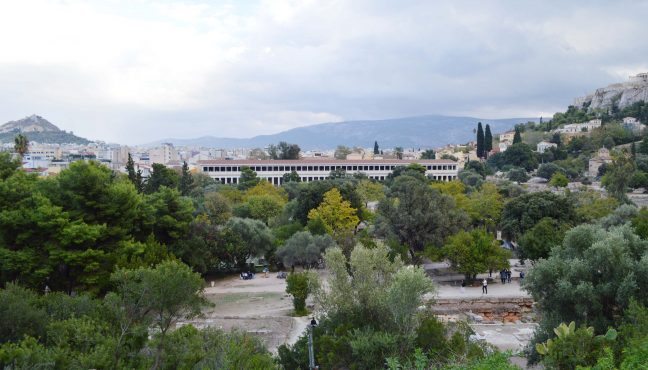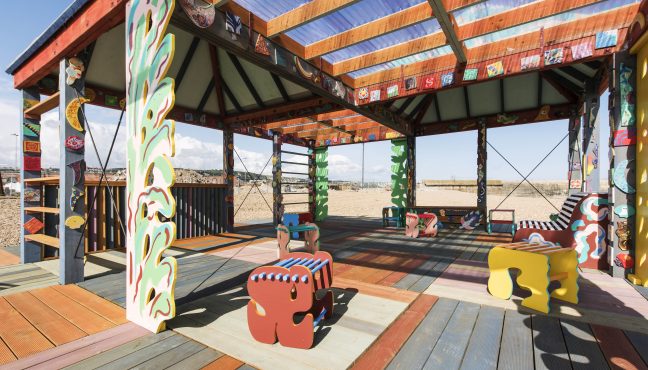About a 30-minute drive southeast of Syracuse, New York, is the town of Cazenovia. There is no freeway passing through Cazenovia and very little traffic on its roads at all. The quiet Central New York town is primarily known for Cazenovia Lake, a fun weekend getaway destination, and for Cazenovia College; however, it is also home to a wonderful hidden secret called Stone Quarry Hill Art Park.
The undeveloped land that became the Art Park was originally property owned by sculptor Dorothy Riester and her husband Bob Riester. The picturesque rural area featured the Riesters’ home and Dorothy’s art studio. In 1991, Dorothy converted the land into Stone Quarry Hill Art Park to explore art and nature together..
The sculptures decorating the Art Park’s landscape not only come from Dorothy Riester herself, but also from many other local and international artists as well. Japanese artist Reiko Aoyagi is one of the most well-known international artists featured there. Aoyagi’s landscape architecture work Flow is made from excavated earth and provides unique natural art in contrast to the many metal sculptures throughout the area.
My two favorite sculptures at the Art Park are the art duo All Creations’ (Matt Rink and Bland Hoke) Third Iteration and Takafumi Ide’s Threshold. Made by reusing old lamp posts and adding a bit of green cloth to them, the numerous arched rows of Third Iteration make it one of the most impressive sculptures to see there. Ide’s Threshold looks exactly like what its name implies: a threshold. Located in a woodland area, Threshold is a three-dimensional white metal outline that looks like a door to some magical place.
While some of the sculptures have been on display for a few decades, others have (with permission from their artists) been removed due to damage from nature and the elements. The constant exposure to sunlight, wind, rain, snow, and ice causes deterioration over time. Some sculptures, such as Stacks by David Harper, are built with the intention of their eventual natural deterioration. Stacks appears to be a tree transforming into a bookcase (complete with old books on it), but beginning to decay. The biodegradable wooden sculpture faces several natural problems ranging from weather to insects. Harper intentionally made his sculpture with a lifespan so it will eventually return to nature. Because of this, Stacks is a perfect illustration of Dorothy Riester’s vision of art and nature intertwined together. While it will presumably last for many more years, do make sure to see this popular wooden sculpture while it is still there!
For artists themselves, the Art Park features an artist-in-residence program. This fellowship includes on-site housing and other resources, such as access to the A-frame art studio building, that give artists a chance to create new site-specific sculptures in alignment with the Art Park and its vision. The Art Park also makes itself available for site rentals, hosts art exhibitions, and occasionally live music concerts or other special events.
In 2015, I had the wonderful experience of working as the Collections Intern at Stone Quarry Hill Art Park for about half a year. If you have ever been to Syracuse, or Rochester, or Buffalo, or any of the other surrounding towns or cities during the winter, then you know that they get some of the most snowfall in the entire US. In some states, spring has either begun, or will soon begin in March; however, my time at the Art Park started in March and the ground was still completely covered in snow. Although the weather does affect the number of visitors there, the Art Park finds creative ways, such as snowshoe rentals, to give those who decide to visit a chance to still explore the park. Even if the sculptures are surrounded by snow, the Art Park remains open and a wonderful place to visit. Just remember to dress warmly!
With so much open land to explore, the Art Park is a great spot for a hike. You are sure to get some good exercise while admiring the many sculptures throughout the hilly landscape. Also, make sure to stop by the Art Park’s indoor exhibition space, the John and Virginia Winner Memorial Gallery (open Thursday through Sunday in the afternoon), to see rotating exhibits of paintings, installations and other types of art. Often, the artwork displayed in the indoor gallery is available for sale. Books about the history of Stone Quarry Hill Art Park and other items are also available for purchase here.
Another one of my favorite things about the Art Park is the wildlife in it. Numerous kinds of songbirds live throughout the area and can often be spotted perching on top of the sculptures themselves. During the spring and summer, frogs can be heard near a small pond a short distance outside the John and Virginia Winner Memorial Gallery. Occasionally, you might even see something a little bit less common – for example I once saw a marmot exploring the park.
With its somewhat remote location in the small town of Cazenovia, Stone Quarry Hill Art Park is a secret waiting for you to discover it. Nearby Syracuse has several museums of its own, but if you are in the area, then consider driving out to Cazenovia to see the Art Park as well. The trip is fairly simple and the destination will be worth your while. The town itself also includes a few local shops and restaurants to visit along with its lake. Also, consider stopping by the Cazenovia Public Library, only about a 1 or 2-minute drive from the Art Park, to see its Egyptian mummy on display. If you are visiting the Central New York area and hoping to find a quiet spot to breath some fresh air and see some modern sculptures, then Stone Quarry Hill Art Park is your answer!
